Haunting Photos Of An Abandoned Air Force Base

Inside the abandoned Chanute Air Force Base in Rantoul, Illinois. (All photos: Walter Arnold Photography)
Walter Arnold has spent the last six years photographing abandoned sites across America. His project, The Art of Abandonment, has taken him all over the country, from junkyards for classic cars in Georgia and crumbling resorts in the Catskills, to the decommissioned Chanute Air Force Base in Illinois.
Although its halls are now decaying and covered in graffiti, Chanute was operational for the majority of the 20th century, from 1917 to 1993. For those 75 years and over two World Wars, it functioned as a technical training center for the Air Force. At the time of its closure, it was the country’s third-oldest active base.
Arnold’s photos take us inside the eerie ruins of the Chanute base, which looks as if it has been abandoned for far longer than 22 years. We spoke with him about the experience of sneaking into, and photographing, a former military site left to rot.
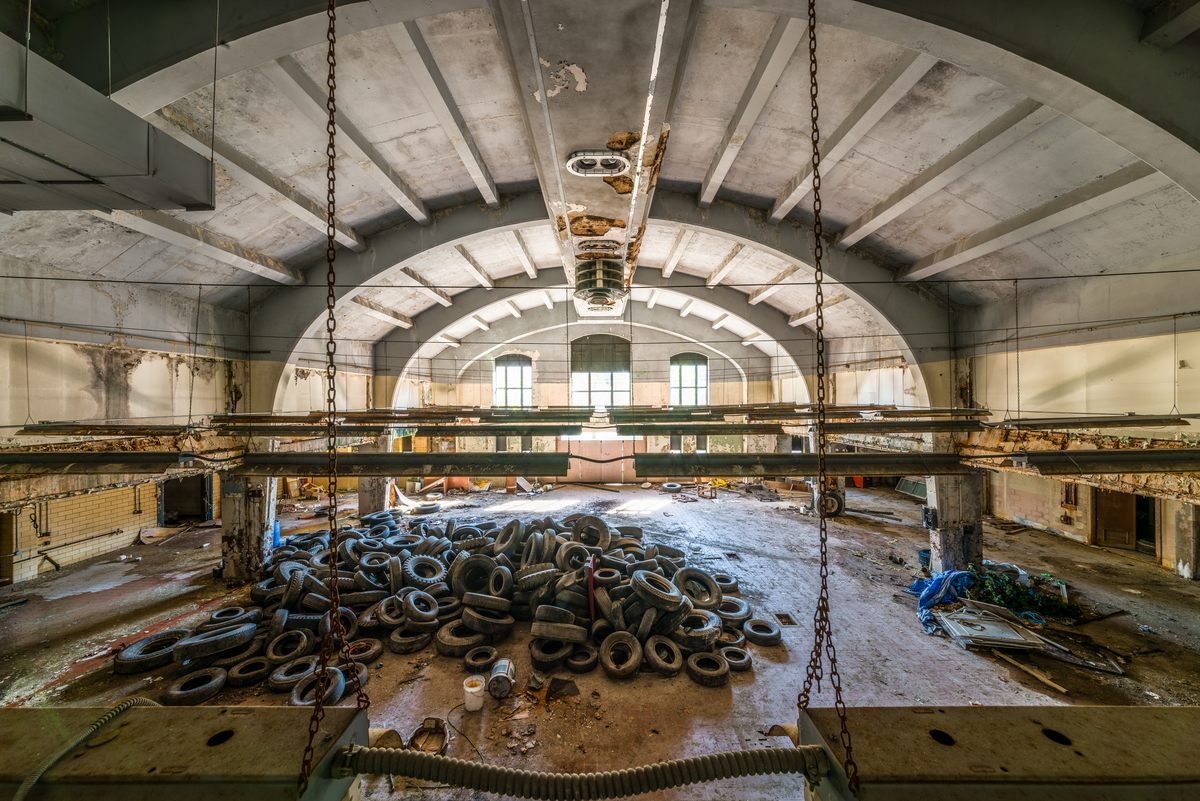 The interior of the White Hall at Chanute.
The interior of the White Hall at Chanute.
How did you get access to the base?
While most of the locations that I photograph for my Art of Abandonment series are done with direct permission from the owners of the properties, Chanute was an exception to that rule. My brother, Will, lives down the road in Champaign, Illinois, and knew of a way to access the building. With his help we had no problem sneaking into the base.
At this time of this writing however, I would strongly discourage anyone from attempting this, as the city is currently preparing the building for demolition and as such it will be patrolled more than usual.
 Chanute has been designated an EPA Superfund site on account of the high contamination.
Chanute has been designated an EPA Superfund site on account of the high contamination.
What were your expectations before shooting the base – did you have any sense of how it would look?
I honestly had no idea what to expect going into this shoot, I only knew that it was a big place and had a rich history and that was enough to pique my interest. I was wholly unprepared for the magnitude of the building and just how much there was to explore there. Room after room of classrooms, offices, hangars, and hallways that seemed to loop around infinitely.
Many of the classrooms and hallways had hand-painted murals on the wall with motivating messages, renditions of famous statues, and logos of different squadrons. It was like an asbestos riddled Easter egg hunt tracking them all down! We spent the better part of a day shooting there and I am sure there were sections that we missed.
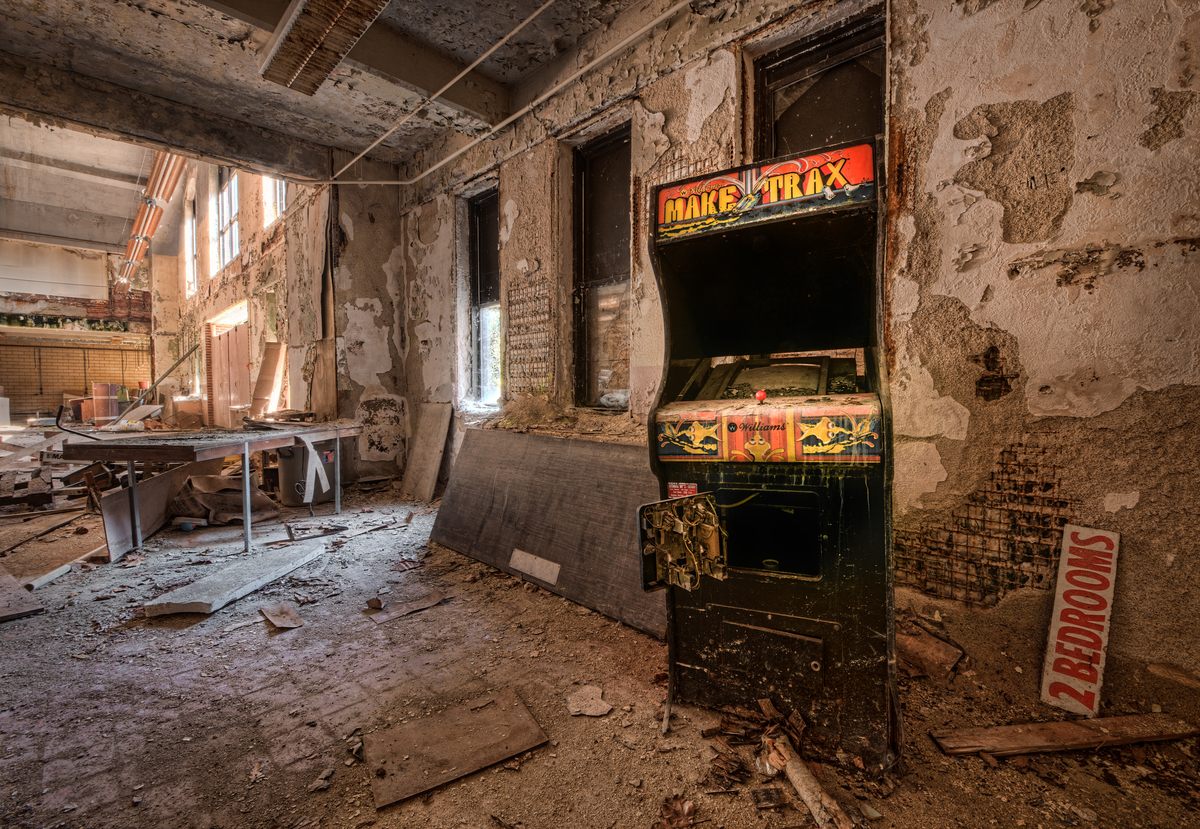
A Make Trax arcade game.
What was the most impressive part of the base?
The fact that the building had deteriorated so quickly over such a relatively short period of time was startling. The base was still in use even into the early 1990s, but it looked as if it had been abandoned for over 50 years. This was easily one of the more toxic locations I have visited.
Asbestos and mold were abundant. Many of the inside rooms had standing water. Drop ceilings had fallen, along with light fixtures, and everything was rusted. In most of the interior spaces there were calcium stalactites and stalagmites as if the ceilings were dissolving. We used breathers in parts of the building, especially in areas that were closed off with no outside air circulation.
After the shoot I found EPA reports online that talked of heavy contamination on the grounds, and even some articles that claimed the possibility of “Agent Orange” on the site but could not be confirmed.
 Peeling paint and books on the floor.
Peeling paint and books on the floor.
Can you tell us more about the history of the Chanute Air Force base?
Chanute Air Force Base, formerly Chanute Field (named in honor of Octave Chanute, an adviser to the Wright Brothers), is located in Rantoul, Illinois, and dates back to World War I. Even though the U.S. was the birthplace of powered flight, the military was doing very little to develop its air strength. As of April 1917 the U.S. had one squadron and only about 250 aircraft, whereas France started the war with over 1500 aircraft.
Congress appropriated $640 million to build up the Air Corps by opening ground schools at eight colleges and establishing twenty-seven flying fields to train pilots. The city of Rantoul was selected because of its level terrain and close proximity to both the Illinois Central Railroad and the ground school at the University of Illinois. Construction of the original airfield took two months, 2000 men, and 200 teams of horses. It was completed on July 22, 1917.

A ceiling collapses in a classroom.
So it was operational for about 1.5 years of World War I. How about World War II?
Following the 1941 attack on Pearl Harbor, thousands flocked to Chanute to enlist in the U.S. Army Air Corps. The 15,000-man quarters quickly became insufficient and many soldiers found themselves temporally housed in tents. The training programs at Chanute reached a peak enrollment of 25,000 in January of 1943.
Chanute is dominated by White Hall, a 500,000-square-foot building, equivalent to eleven football fields, and was the largest American military center before the Pentagon was built in 1941. White Hall was built in response to the huge influx of recruits wanting to serve their country just prior to World War II. It was a self-contained, multipurpose troop barracks for more than 2000 men. Its amenities included a barber shop, post office, communications office, mess hall, bakery, library, and study halls.
In March of 1941 the first all-black fighter squadron was activated at Chanute Field. Formed without pilots but with the purpose of training the officer corps and ground support personnel, the 99th Pursuit Squadron was the first unit of what became known as the Tuskegee Airmen.


What kind of life do you think the trainee pilots had while living there?
Chanute during WWII must have been a sight to see. So many people flocked there in response to the Japanese attack on Pearl Harbor, that they didn’t have room to house all the new recruits. People were camping out on the lawns until White Hall was completed. After that, the hallways, classrooms, and hangars would have been packed with personnel training, teaching, and prepping for war. During WWII the mess halls at Chanute served over 75,000 meals per day.
As a lifelong civilian, I can’t pretend to comprehend the rigorous schedule of physical and mental training that a soldier has to go through in order to be proficient at his assigned post. There are many comments from people who attended Chanute over the years in the comments section of my blog that help tell the story of life at Chanute.


What do you know about the impact of the base on the town of Ranoul, and the continued aviation presence?
“Traumatic. Devastating. Eerie. As if a family member had died.” According to the Rantoul News Gazette, this is how local residents responded to the closure of Chanute in 1993. As with any town that relies heavily on one major institution for its economic prosperity, the closure of Chanute in 1993 had a significant negative impact on the local economy. Literally half the population vanished, home values plummeted, and commercial spending in the local economy dropped by over $100 million. Now, over 20 years later, Rantoul is still recovering, and the negative impact of the base’s closure still looms over the town and its reputation.

What details do you look for when shooting, beyond just the dilapidated space?
I often search for a human element, something that people can relate to. Whether it’s a row of old barstools, pool chairs sitting around an abandoned indoor pool, or a third grade spelling book from the ‘30s leaning against a chalkboard in an abandoned school house, these are the things that pull people in and help them engage and relate to the scene. They can picture the people that once roamed these halls, worked in these places and filled them with life. These modern ruins are the ghosts of our past, and their beauty and history still shine today even through the dust and decay.
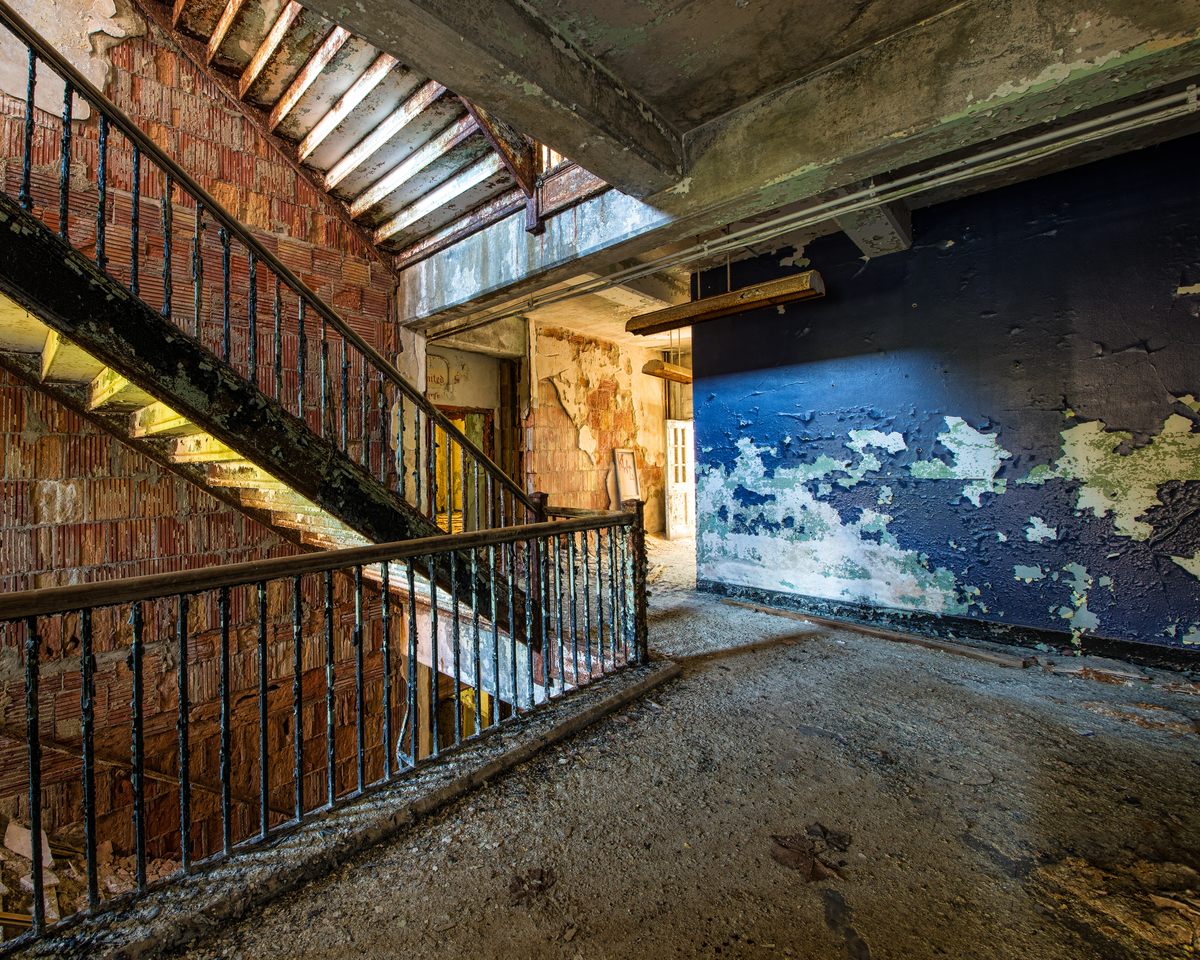


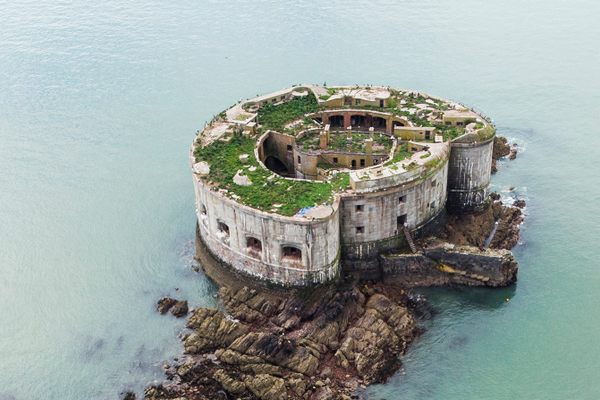
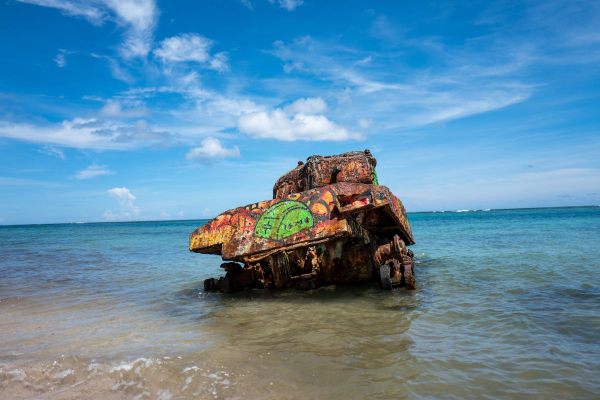
















Follow us on Twitter to get the latest on the world's hidden wonders.
Like us on Facebook to get the latest on the world's hidden wonders.
Follow us on Twitter Like us on Facebook